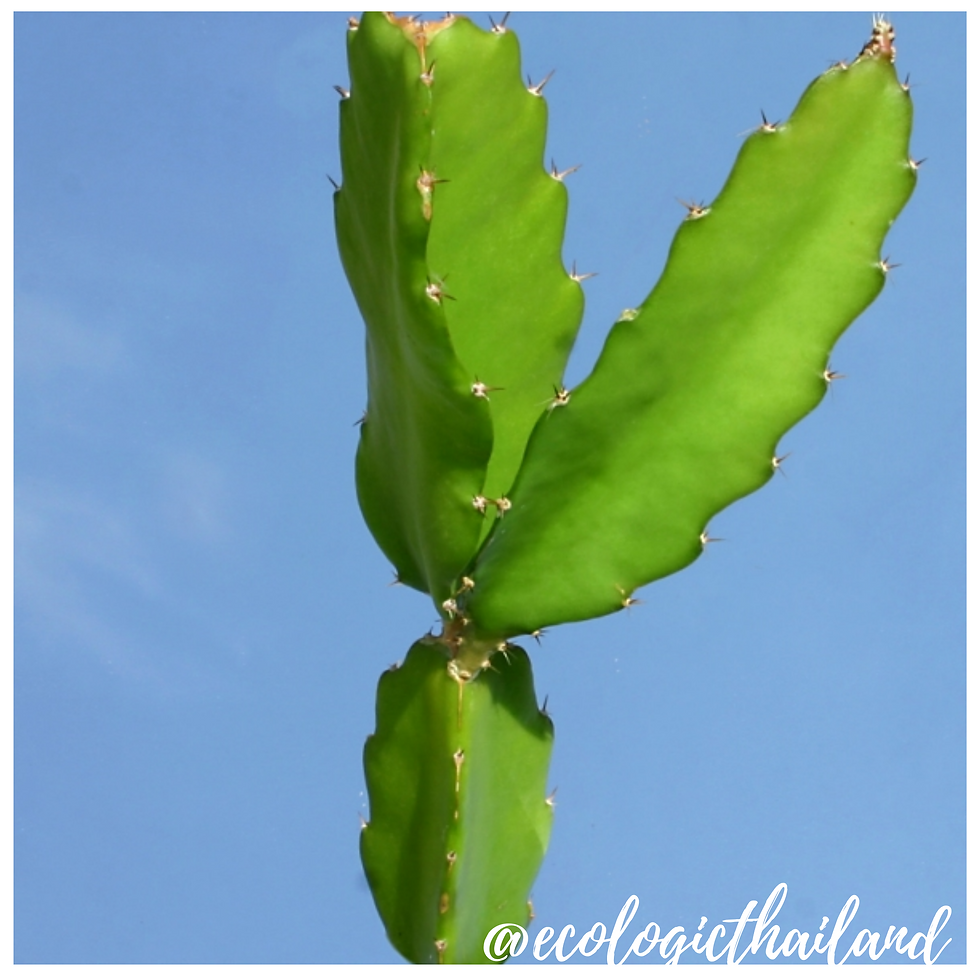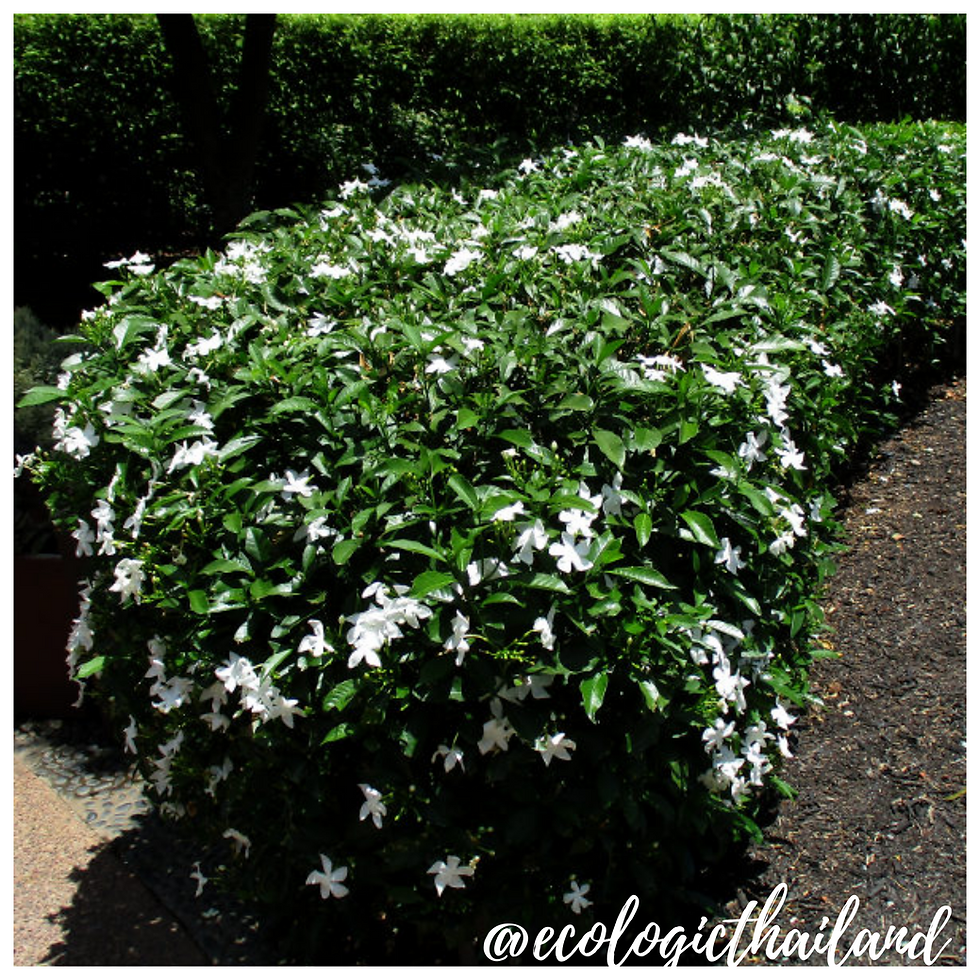Dragon fruit | Pitahaya
- Eco-Logic Resort
- Jan 4, 2021
- 3 min read
Kaeo mangkon| แก้วมังกร | Selenicereus undatus
Family: Cactaceae - Genus: Selenicereus

The dragon fruit plants can be found growing over umbrella like constructions on several plantations in the Paksong area.
The white-fleshed dragon fruit of pitahaya , is as a sprawling or vining, terrestrial or epiphytic cactus. They climb by use of aerial roots and can reach a height 10 meters or more growing on rocks and trees.
Dragon fruit is a staple food in Thailand. Dragon fruit is a wonder fruit because it provides multiple health benefits. They are also eco friendly, as they protect the environment by absorbing carbon dioxide at night and release lots of oxygen into the air.
Dragonfruit is harvested towards the end of the rainy season, September - October.

THE PLANT
Dragon fruit plant have stems that are scandent (climbing habit), creeping, sprawling or clambering, and branch profusely. There can be 4–7 of them, between 5 and 10 meter or longer, with joints from 30–120 centimeter or longer, and 10–12 centimeter thick; with generally three ribs; margins are corneous (horn-like) with age, and undulate.

Areoles, that is, the small area bearing spines or hairs on a cactus, are 2 mm across with internodes 1–4 centimeter . Spines on the adult branches are 1–4 mm long, needle-like to almost conical, and grayish brown to black in color and spreading, with a deep green outside.

THE FLOWERS
The scented, nocturnal flowers are 25–30 centimeter long, 15–17 centimeter wide . Their color is greenish-yellow or whitish, rarely rose-tinged;
The flowers are edible too and used like a vegetable.

THE FRUIT
The fruit is oblong to oval, 6–12 centimeter long, 4–9 cm thick, red with large petals, with white pulp and edible black seeds
CULINARY USES
The fruit is sweet, tastes a bit like an earthy watermelon and has a texture that resembles kiwifruit, but it's a little crunchier.
It can be scooped straight out of the rind and eaten raw or sliced and added to fruit salads with other tropical fruit. It is wonderful when puréed and made into a simple frozen sorbet or added to smoothies. It makes great salsas as well as shakes.
Dragon Fruit flower buds are used like a vegetable, and are most often cooked prior to consumption. The buds are sautéed or used to make soups. They can also be dipped in an egg mixture or batter and fried. Fried Dragon Fruit flower buds can be used as an accompaniment for meats and other main dishes.
NUTRITION
A 100 gram serving of white-fleshed pitahaya provides an estimated 21 milligrams of vitamin C, By way of comparison, this is less than half the amount of vitamin C found in an equal serving of oranges but more than three times the amount of vitamin C found in carrots.
TRADITIONAL MEDICINAL USE
NOTE: please take advice from a doctor if you are planning to use herbal medicine.
Dragon fruit is known to reduce cholesterol levels and high blood pressure
Dragon fruit is said to boost the immune system and the fibers help in digestion. Dragon fruit is also known in folk medicine for preventing memory loss, controlling blood glucose level in. diabetes and aids in healing of wounds.
INTO THE WILD: a down to earth experience

For guests and visitors to Paksong we organize weekly tours "The Edible Forest" and Foraging weekends: Into the Wild. We work with local guides to take you in the jungle of Paksong. After foraging, we will cook a meal with the ingredients, using bamboo together with you!
Come and join and learn about the abundance of food that nature gives us!
INTO THE WILD!


















Comments